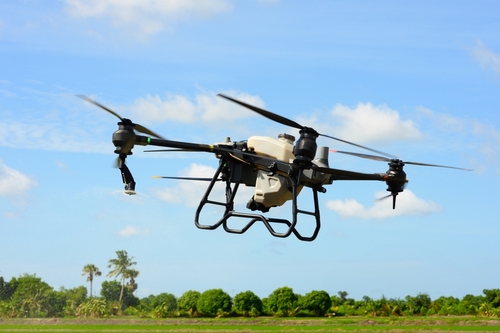In a security breach that has left U.S. military officials on edge, a mysterious fleet of unmanned drones invaded restricted airspace over Langley Air Force Base in Virginia for 17 consecutive nights in December 2023. These unknown aircraft, described as highly sophisticated, entered a no-fly zone that includes some of the nation's most critical military assets, including the base for Navy SEAL Team Six and Naval Station Norfolk, the largest naval base in the world.
The incidents began just after sunset each night, with the drones flying at altitudes of 3,000 to 4,000 feet and traveling at speeds over 100 miles per hour. The first drone was spotted by U.S. Air Force General Mark Kelly, who, along with other officers, was stationed on the rooftop of a squadron building overseeing the F-22 Raptor fighter jets. Witnesses reported seeing up to a dozen drones flying in a formation across Chesapeake Bay, heading toward Norfolk.
These large mystery drones flew over Langley Air Force Base 10 months ago stumping the Pentagon, according to a new report. https://t.co/8ifjunDbFN pic.twitter.com/ZXZH9RMH58
— ❣️Anne❣️ (@USA_Anne711) October 13, 2024
Despite numerous attempts to track and intercept the drones, U.S. military and intelligence officials were unable to identify their origin. The Pentagon, the FBI, and even the Department of Defense’s newly formed UFO office were involved in high-level discussions to analyze the threat.
The possibility that the drones were operated by hobbyists was considered, but their size, speed, and the complexity of their movements led many to suspect a more advanced operation, possibly involving foreign adversaries such as Russia or China.
Unknown drone fleet breached US military base airspace in Virginia for 17 straight days: report
Source: Fox News https://t.co/zrNk4jAwwB— Leslie Davis (@FarmerGirl1967) October 14, 2024
These alarming drone sightings prompted two weeks of emergency meetings at the White House, with senior officials weighing options to counter the threat. Ideas such as using electronic jamming or deploying directed-energy weapons were discussed but ultimately rejected due to concerns about disrupting nearby air traffic and emergency systems. The breaches, which ended abruptly on December 23, 2023, left many questions unanswered, and no group or country has taken responsibility for the incidents.
The drone incursions came just two months after a similar event at a U.S. nuclear weapons experiment site in Nevada. In that case, five drones breached restricted airspace, raising further concerns about the vulnerability of critical U.S. military installations. Security experts warn that these events signal a growing trend in covert drone operations targeting high-profile military sites.
The U.S. military continues to struggle with the challenge of addressing such incursions domestically. Current federal law limits their ability to shoot down drones unless there is an immediate threat, complicating the response. This gap in defense capabilities has sparked debate about whether new counter-drone technologies, such as directed-energy weapons or advanced radar systems, should be deployed more broadly to protect U.S. airspace.
While investigations continue, officials remain on high alert for any similar incidents. The breach at Langley Air Force Base has underscored the growing threat posed by unmanned aerial systems (UAS) and the need for stronger defenses against this evolving challenge. As the Pentagon evaluates its response options, concerns are mounting that future drone incursions could be part of larger, more coordinated attacks against U.S. military facilities.

